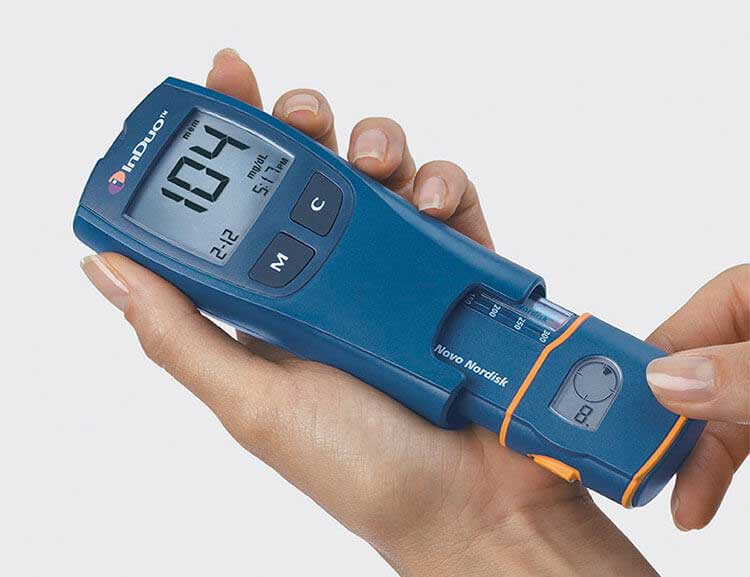In 1921, a team of Canadian researchers discovered the molecule insulin and ignited a century of ground-breaking innovations in diabetes care that have since saved countless lives.
Today, we are fortunate to have better medicines than ever, yet the number of people living with diabetes continues to grow at an alarming rate, placing a substantial burden on individuals, families and societies.
Explore the journey

Insulin: A breakthrough innovation

Frederick Banting and Charles Best at the University of Toronto.
Insulin: A breakthrough innovation

Frederick Banting and Charles Best at the University of Toronto.
First life saved by insulin

Before and after images of a child with type 1 diabetes.
First life saved by insulin

Before and after images of a child with type 1 diabetes.

August and Marie Krogh
Insulin production begins in Scandinavia
Insulin production begins in Scandinavia

August and Marie Krogh
Novo Nordisk insulin production in the 1930s.

Hans Christian Hagedorn
NPH insulin decreases the burden of treatment
NPH insulin decreases the burden of treatment

Hans Christian Hagedorn
Novo Nordisk insulin production in the 1940s.
A new era in diabetes understanding

A new era in diabetes understanding


Ames Reflectance Meter
Portable glucose meter simplifies diabetes monitoring
Portable glucose meter simplifies diabetes monitoring

Ames Reflectance Meter

Laboratory in Bagsværd, Denmark.
HbA1C in clinical practice
HbA1C in clinical practice

Laboratory in Bagsværd, Denmark.
First commercially available human insulin
First commercially available human insulin

Patient with an insulin pump.
The first “mini” insulin pump
The first “mini” insulin pump

Patient with an insulin pump.
Easier and safer management – the first insulin pen

The Novo Syringe from 1925 and the first NovoPen® device from 1985.
Easier and safer management – the first insulin pen

The Novo Syringe from 1925 and the first NovoPen® device from 1985.
Introduction of first generation insulin analogues
Introduction of first generation insulin analogues

InDuo combination insulin delivery device and blood sugar monitor from 2001.
First CGM system approved
First CGM system approved

InDuo combination insulin delivery device and blood sugar monitor from 2001.
Beyond insulin: new treatment options for type 2 diabetes
Beyond insulin: new treatment options for type 2 diabetes
Novo Nordisk R&D GLP-1, 2008.
Introduction of new generation insulin analogues

Ayşe Naz Baykal has type 1 diabetes and lives in Turkey.
Introduction of new generation insulin analogues

Ayşe Naz Baykal has type 1 diabetes and lives in Turkey.

Discovering and developing new protein and peptide-based therapies.
First oral GLP-1 treatment for type 2 diabetes
First oral GLP-1 treatment for type 2 diabetes

Discovering and developing new protein and peptide-based therapies.
Mandy Marquardt has type 1 diabetes, rides for Team Novo Nordisk and lives in the USA.
